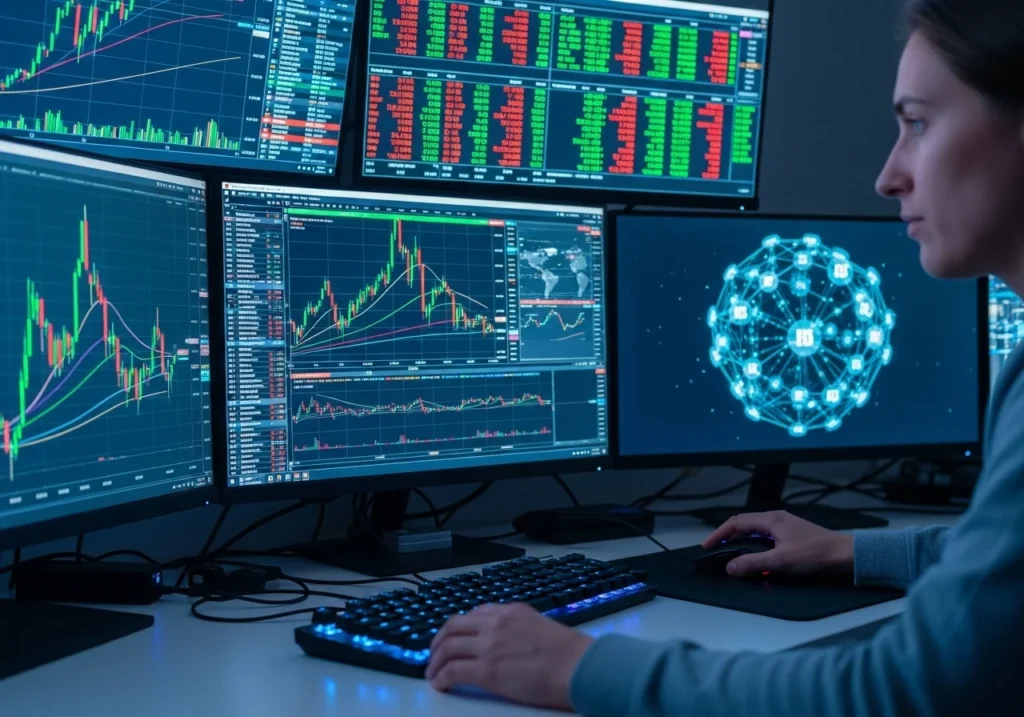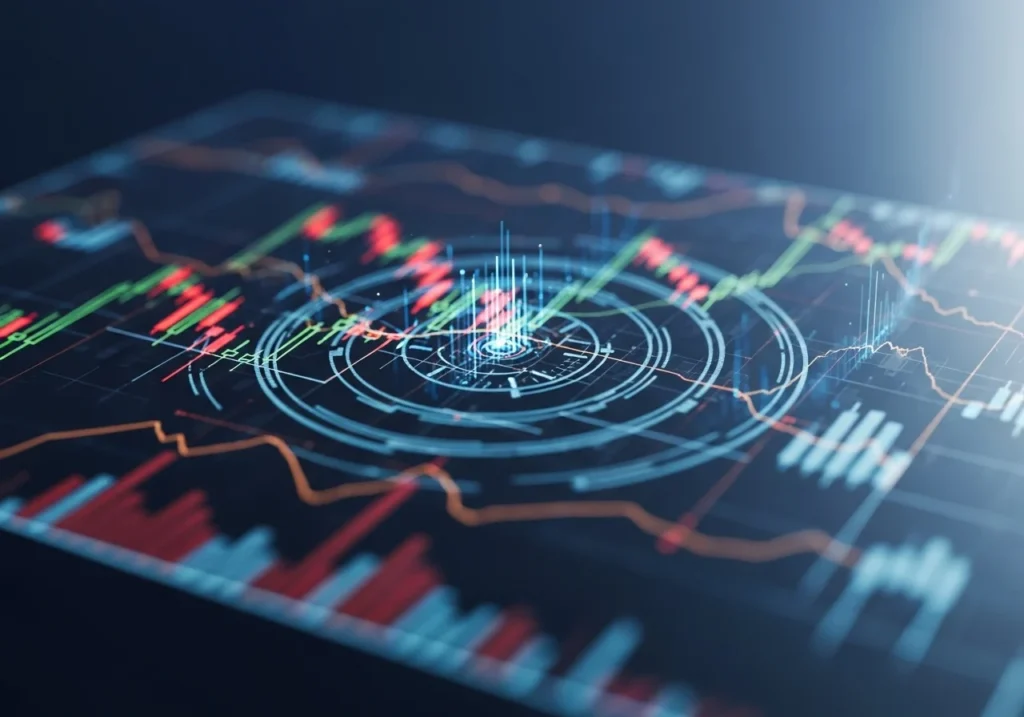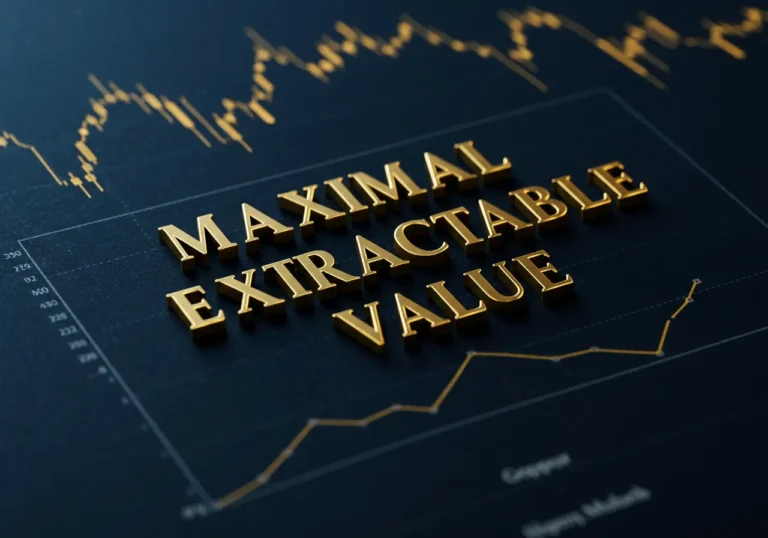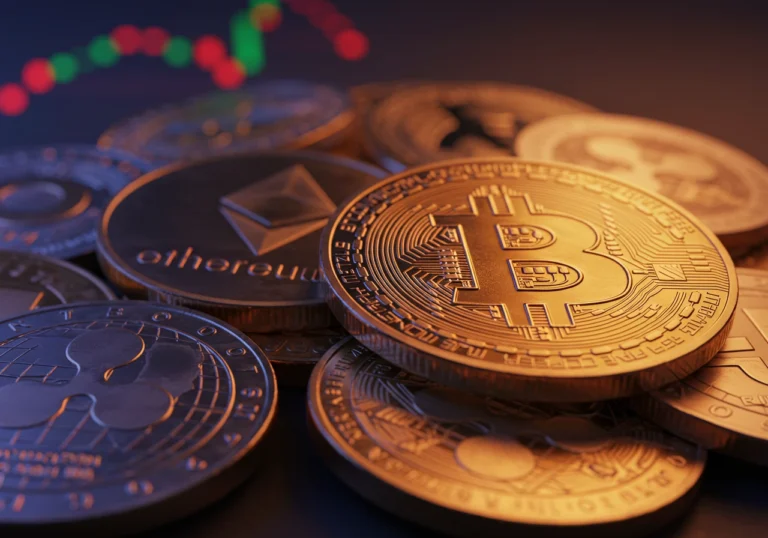High-Frequency Trading (HFT): Understanding the Algorithms Behind Market Makers
Table of Contents
Let’s get straight to the point, HFT sits at the intersection of speed, math, and careful design. It can seem mysterious. But if we break it down, the pieces are easy to understand.
What is HFT?

HFT stands for High-Frequency Trading. At its core, it is trading done by computer programs that act very fast. These programs place many orders in tiny time frames — milliseconds or less. The goal is to profit from small price differences or to provide liquidity to the market.
Think of a busy parking lot where cars are trying to find spaces. A helpful attendant directing traffic makes the flow smoother. In markets, market makers play a similar role. They post buy and sell prices so others can trade instantly. HFT algorithms often power these market makers.
An assumption
Imagine a neighborhood bakery selling cookies. The baker keeps cookies on the shelf and restocks fast when they sell out. Customers don’t wait. In financial markets, market makers keep “cookies” (shares or contracts) available. HFT acts like a super-fast restocking system.
Why speed matters
Speed is the defining feature of HFT. But why? The market is a place where information and prices move quickly. When news breaks, prices change. A small time gap opens chances:
- Price difference between two venues.
- Tiny mispricings in the order book.
- Free moment to capture a very small profit.
A soldier in a race catches the coin first. Speed gives advantage. But advantage also brings responsibilities and risks.
Example: the coffee shop
Imagine two coffee shops on the same street. One charges $3, the other $2.99. If you can race between them in one second, you pick the cheaper coffee. In markets, algorithms spot tiny differences and act in microseconds.
Who are market makers?
Market makers are traders or firms that post buy and sell offers. They earn small profits on the spread — the gap between the buy (bid) and sell (ask) prices. Their activity helps other traders buy or sell quickly without big price jumps.
Market makers can be humans, but often they use HFT systems. These systems decide when to update prices, how many orders to place, and where to send them.
Why markets need market makers
Without market makers, buyers and sellers might wait longer. Prices could swing more. Market makers bring calm. They reduce friction. That benefits everyone who trades.
The basic algorithms behind HFT
Under the hood, HFT systems use rules and math. But the rules can be described simply. Here are the main types:
1. Market making algorithms
These algorithms post buy and sell offers continuously. They aim to profit from the spread. They also manage risk by adjusting quotes when prices move.
Plain explanation: Post offers on both sides. If one side fills, adjust to avoid holding too much of an asset. Think of a shop lowering price on unsold bread to avoid waste.
2. Statistical arbitrage
This type looks for predictable patterns or relationships. If asset A tends to move a little before asset B, the algorithm trades both to capture a tiny gain.
Plain explanation: If apples and pears usually sell at tied prices, and pears dip, buy pears and wait for the tie to return.
3. Latency arbitrage
This uses faster access to price information to act before others see the change. Firms co-locate their servers near exchanges and push orders faster.
Plain explanation: Imagine two friends racing to buy a rare toy online. One lives next door to the store’s server and clicks a split second earlier.
4. Order flow prediction
Here, the algorithm tries to guess the next orders based on current ones. It may step in with quotes to profit from the predicted movement.
Plain explanation: At a garage sale, someone signals they will buy a set. You predict they’ll also buy related items and prepare to sell.
Data and models: the building blocks

At the heart of HFT are data and models. The algorithms read streams of market data. They look at order books, trades, and news. Then they act.
- Order book: shows current buy and sell orders.
- Tick data: every trade that happens.
- News feeds: headlines that can move prices.
Models translate data into decisions. Some models are simple rules. Others use machine learning to find subtle patterns.
Safety checks
Good systems include safety limits. For example:
- Limit how much can be traded per second.
- Stop trading when losses exceed a threshold.
- Test changes in a simulated environment first.
These steps reduce the chance of runaway errors.
How HFT affects ordinary traders
There is a lot of talk about whether HFT helps or hurts regular investors. The truth is mixed.
Ways HFT can help
- Tighter spreads. Market makers often narrow the spread, lowering cost to trade.
- Better liquidity. Trades can happen faster and in larger amounts.
- More stable prices in normal conditions.
Ways HFT can hurt
- Sudden spikes: Rapid algorithms can withdraw liquidity during stress, causing big moves.
- Complexity: The market becomes harder to understand.
- The last-mile race: Retail traders do not gain from microsecond edges.
Think of a highway with fast and slow lanes. Fast lanes improve overall flow. But if fast cars suddenly stop, slow lanes may block too.
Controversies and risks
HFT has its critics. Some argue it can cause unfair advantages or amplify shocks. Others point to events where automated systems caused big price swings.
The flash crash example
In 2010, a sudden plunge in prices affected many markets. Automated responses and withdrawals of liquidity played roles. The lesson: systems must be tested for rare stress conditions.
Fairness and regulation
Regulators look at HFT closely. Rules focus on:
- Making markets fair and transparent.
- Preventing manipulative tactics like spoofing (placing orders with no intent to execute).
- Ensuring systems have controls and limits.
The market evolves. So do the rules.
How market makers manage risk
Market makers face the risk of holding unwanted assets. They want to avoid big losses from price moves. Strategies include:
- Adjusting quotes quickly when the market moves.
- Hedging with other instruments.
- Capping exposure per asset.
- Using inventory models to balance holdings over time.
A simple rule is: don’t let inventory get too large. If you suddenly own too many of something, sell some or change your prices.
Technology: colocation and connectivity
A technical edge matters. Firms buy very fast connections and co-locate servers near exchanges. This reduces latency — the tiny delay between sending and receiving data.
But speed alone is not enough. Robust software, risk checks, and testing matter more in the long run. Think of racing: a well-trained team beats raw horsepower often.
Ethics and the market’s future
Markets are social systems. They work best when many people trust them. HFT offers efficiency but raises ethical questions. Who benefits most? Are systems transparent? Do rules protect small investors?
Many in the industry seek balance. The aim is to keep speed while ensuring fairness. Upgrades to market structure, better surveillance, and clearer rules help.
Practical advice for ordinary investors
If you are not an HFT firm, what should you do?
- Focus on your plan. Don’t chase tiny intraday moves.
- Use limit orders when appropriate. They help control the price you pay.
- Be mindful of liquidity during volatile times. Prices can gap.
- Learn the basics of order types and fees on your platform.
- Think long-term when investing in assets with solid fundamentals.
Small, steady steps beat chasing micro-edges.
Quick recap
- HFT means trading with very fast computer algorithms.
- Market makers use HFT to post buy and sell prices and provide liquidity.
- Main algorithm types: market making, statistical arbitrage, latency arbitrage, order flow prediction.
- Data and models drive decisions; safety checks limit risk.
- Benefits: tighter spreads, faster trades. Risks: sudden liquidity drops, complexity.
- Regulators monitor HFT for fairness.
- Ordinary investors should focus on plan and basics, not microsecond speed.
FAQ
Q: Is HFT illegal?
A: No. HFT is legal when it follows market rules. Illegal activities like spoofing are against the law.
Q: Can retail traders compete with HFT firms?
A: Not on speed. Retail traders compete on strategy and time horizon. Long-term investing does not rely on microsecond edges.
Q: Do HFTs make markets more volatile?
A: They can under stress. But in normal times, they often reduce volatility by adding liquidity.
Q: Should I avoid markets with heavy HFT?
A: Not necessarily. Many major markets thrive with market maker activity. Focus on fit with your goals.
Q: How do I protect my trades from HFT effects?
A: Use limit orders when price control matters. Avoid overreacting to rapid intraday moves. Learn platform fee structures.

Hello, I’m Edmilson Dias, founder of CoinBringer. I created this platform to guide people through the fast-moving world of cryptocurrency with clarity and safety. With years of research in blockchain and digital security, my goal is to translate complex topics into practical knowledge, offering reliable tutorials, safety insights, and guidance for both newcomers and experienced users.
Discover more from CoinBringer
Subscribe to get the latest posts sent to your email.







